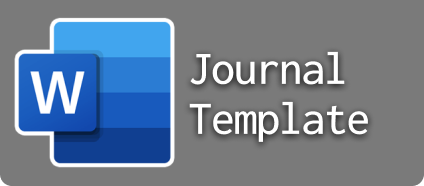ADDITIONAL MENU
Submissions
Submission Preparation Checklist
As part of the submission process, authors are required to check off their submission's compliance with all of the following items, and submissions may be returned to authors that do not adhere to these guidelines.- 1. The submission has not been previously published, nor is it before another journal for consideration (or an explanation has been provided in Comments to the Editor).
- 2. The submission file is in OpenOffice, Microsoft Word, or RTF document file format.
- 3. Where available, URLs for the references have been provided.
- 4. The text is single-spaced; uses a 11-point font; employs italics, rather than underlining (except with URL addresses); and all illustrations, figures, and tables are placed within the text at the appropriate points, rather than at the end.
- 5. The text adheres to the stylistic and bibliographic requirements outlined in the Author Guidelines.
- 6. Citation is done using bracket (last name and year of publication). When the sources are cited verbatim, page number is included (p. 78 or pp. 78-89).
Announcement
We are welcoming for manuscripts or papers to be submitted to Amina as the content of the first issue of the journal (Vol. 2 No. 1) through this system of submission. The deadline is 31 March 2021.
Copyright Notice
Amina Journal a uses license CC-BY SA
Amina Journal uses license CC-BY-SA or an equivalent license as the optimal license for the publication, distribution, use, and reuse of scholarly works.
This license permits anyone to compose, repair, and make derivative creation even for commercial purposes, as long as appropriate credit and proper acknowledgement to the original publication from Amina journal is made to allow users to trace back to the original manuscript and author.
Readers are also granted full access to read and download the published manuscripts, reprint and distribute the manuscript in any medium or format.
Privacy Statement
The names and email addresses entered in this journal site will be used exclusively for the stated purposes of this journal and will not be made available for any other purpose or to any other party.




















